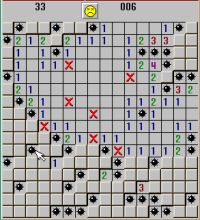 Boundaries and limits. Limits and boundaries. Life is full of these. Why would anyone try to raise a child without a proper grounding in these necessities? We can guess at some of the possible reasons, but people try to do it all the time. Really. All the time.
Boundaries and limits. Limits and boundaries. Life is full of these. Why would anyone try to raise a child without a proper grounding in these necessities? We can guess at some of the possible reasons, but people try to do it all the time. Really. All the time.
Sometimes we needn’t guess why certain individuals try to accomplish this trick. Obviously, people exist for whom something went slightly awry in their childhoods, something that made limits and boundaries seem as negative things when they are, rather, quite positive things—when executed properly, that is. It definitely can happen.
My own life provides evidence for how these social constructs can get a bad name. My parents are, as they say, no longer with us, but let’s just say they were no model for how to teach the value and benefit of boundaries and limits. They were inconsistent; they were needlessly harsh from time to time, and often hypocritical, sometimes transgressing the reasonable limits society had placed upon them, and doing so within sight of the kids. To their credit, perhaps, they did so with a certain admirable élan at times, but still, the fact of the violation, in the face of the strictures they applied to the children at home—well, it just didn’t take a juvenile genius to see through it all and come to one’s own conclusions on the matter. One began to see that boundaries and limits could be a pretty fungible commodity, and that is not the most comfortable discovery for a child to make.
And then life went on and put me in a place where, in 25 years as a teacher and coach in various institutions of public instruction, I learned the value of limits and boundaries while dealing with some 3000 young people—other people’s kids, in fact—many of whom had never heard of such a thing as a boundary before and perhaps not even since.
 Yeah, that’s the way it is with me. Not one to be a martyr in a lost cause, I give up, already.
Yeah, that’s the way it is with me. Not one to be a martyr in a lost cause, I give up, already. I don’t know what got into me, exactly, but on a whim, I entered “I can haz” into a Google search. I guess I was becoming aware how often the phrase appears as I surf around. I wondered how pervasive it had become, how much cultural penetration it had achieved.
I don’t know what got into me, exactly, but on a whim, I entered “I can haz” into a Google search. I guess I was becoming aware how often the phrase appears as I surf around. I wondered how pervasive it had become, how much cultural penetration it had achieved.  With the
With the 
 Those of us who live in Durham, NC, seldom experience the glow of the national spotlight. We have become accustomed to seeing references to the
Those of us who live in Durham, NC, seldom experience the glow of the national spotlight. We have become accustomed to seeing references to the  I live in
I live in